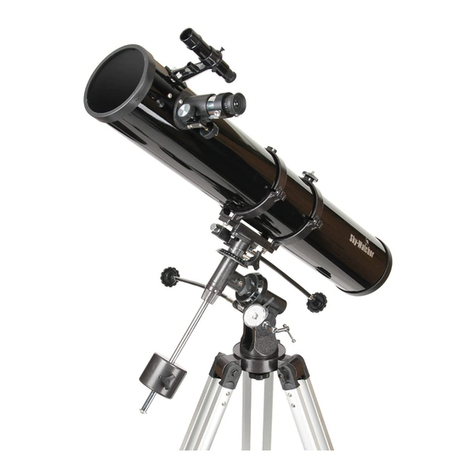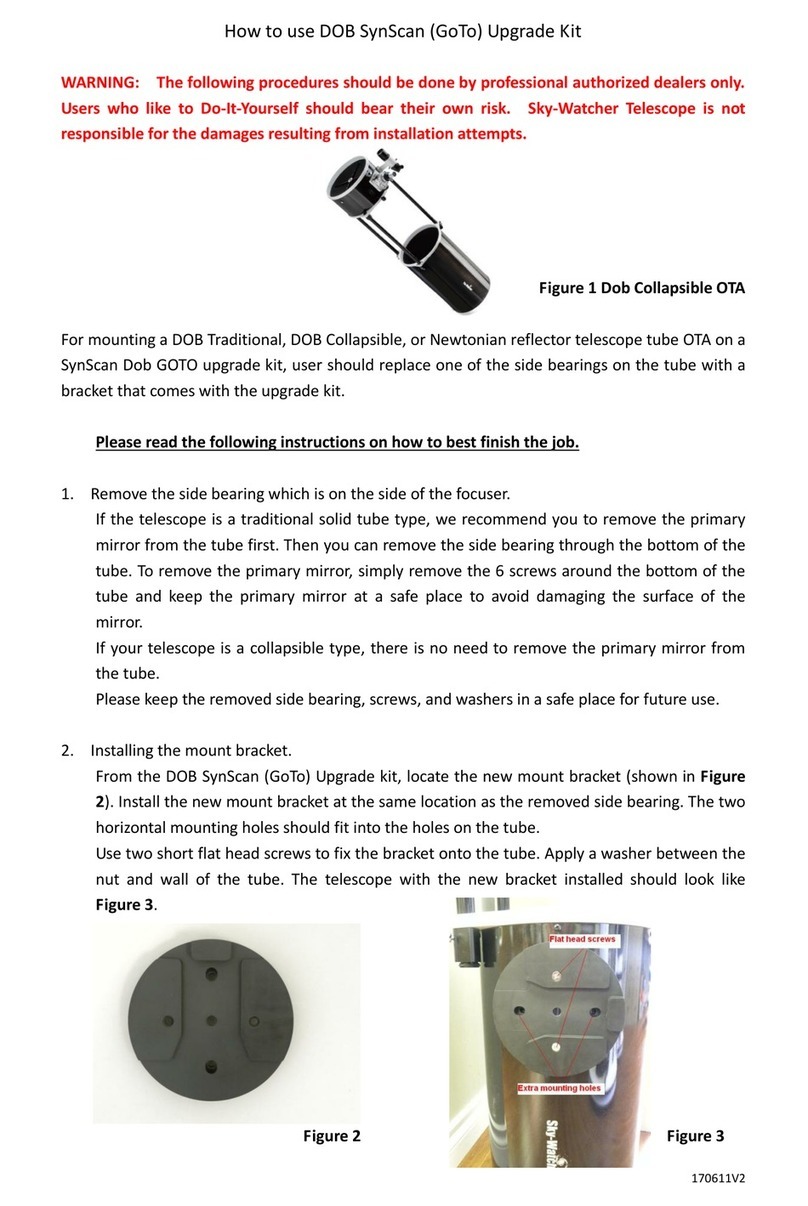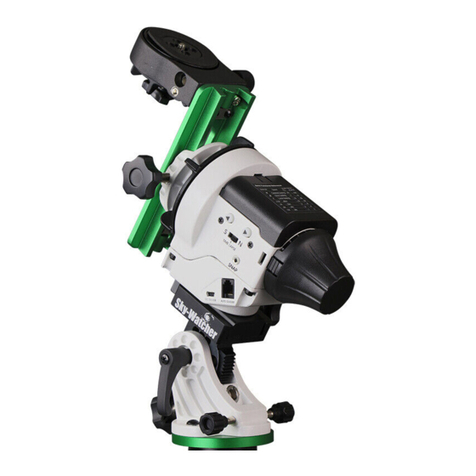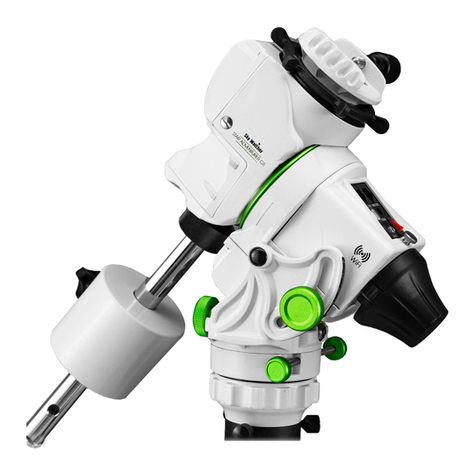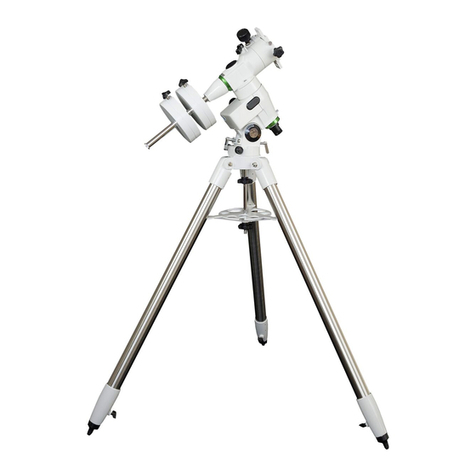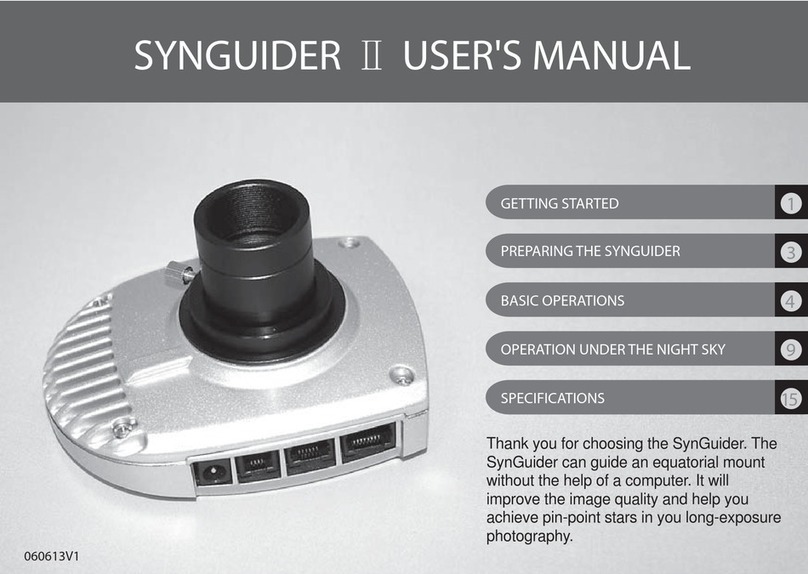
8
Aligning the finderscope
OPERATINGYOURTELESCOPE
Fig.a
Fig.a-1
These fixed magnification scopes mounted on the optical tube are very useful
accessories. When they are correctly aligned with the telescope, objects can
be quickly located and brought to the centre of the field. Alignment is best
done outdoors in day light when it's easier to locate objects. If it is necessary
to refocus your finderscope, sight on an object that is at least 500 yards
(metres) away. Loosen the locking ring by unscrewing it back towards the
bracket. The front lens holder can now be turned in and out to focus. When
focus is reached, lock it in position with the locking ring (Fig.a).
Choose a distant object that is at least 500 yards away and
point the main telescope at the object. Adjust the telescope so
that the object is in the centre of the view in your eyepiece.
Check the finderscope to see if the object centred in the main
telescope view is centred on the crosshairs.
Adjust the two small screws to centre the finderscope
crosshairs on the object (Fig.a-1).
1)
2)
3)
Balancing the telescope
Fig.b
Slowly unlock the R.A. and Dec. lock knobs.
Rotate the telescope until both the optical tube
and the counterweight rod are horizontal to the
ground, and the telescope tube is to the side of
the mount (Fig.b).
Tighten the Dec. lock knob.
Move the counterweights along the counterweight
rod until the telescope is balanced and remains
stationary when released.
Tighten the counterweight thumb screws to hold
the counterweights in their new position.
A Telescope should be balanced before each observing session. Balancing reduces stress on the telescope
mount and allows for precise control of micro-adjustment. A balanced telescope is specially critical when
using the optional clock drive for astrophotography. The telescope should be balanced after all accessories
(eyepiece, camera, etc.) have been attached. Before balancing your telescope, make sure that your tripod is
balanced and on a stable surface. For photography, point the telescope in the direction you will be taking
photos before performing the balancing steps.
R.A. Balancing
1)
2)
3)
4)
1)
2)
3)
4)
5)
Dec. Balancing
The R.A. balancing should be done before proceeding with Dec. balancing.
For best results, adjust the altitude of the mount to between 60º and 75º if possible.
Release the R.A. lock knob and rotate around the R.A. axis so that the counterweight rod is in a horizontal
position. Tighten the R.A. lock knob.
Unlock the Dec. lock knob and rotate the telescope tube until it is parallel to the ground.
Slowly release the telescope and determine in which direction it rotates. Loosen the telescope tube rings and
slide the telescope tube forward or backward in the rings until it is balanced.
Once the telescope no longer rotates from its parallel starting position, re-tighten the tube rings and the Dec.
lock knob. Reset the altitude axis to your local latitude.
N
(diagram applicable to both mounts)

